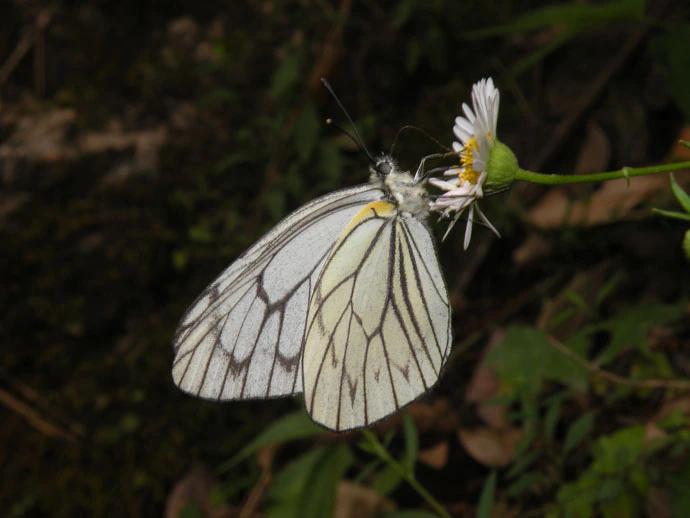Peter Smetacek
Other projects
23 Nov 2009
Inventory of Lepidotera of the Middle Range and Southern Face of the Main Range, Kumaon Himalaya, India
The current project is an attempt to understand the altitudinal distribution of moths on the Himalaya. This study is part of a long term attempt to understand Lepidopteran communities of the Himalaya, especially from undisturbed biotypes. It is hoped that this data will serve as base line data for future studies and attempts to re-build insect communities.

The Himalayan Blackvein is proposed to be called the Arrowhead Blackvein. © Peter Smetacek
The current project is an attempt to understand the altitudinal distribution of moths on the Himalaya. The moth community inhabiting the Bhimtal valley at roughly 1500 m elevation have been studied by me for about 25 years. Now, moth communities at the foot of the Himalaya in Ranibagh (400 m elevation) and in Shyamkhet (2000 m elevation) will be surveyed. Since the outermost range, where these studies are being undertaken, ascend to 2400 m, the three locations will give a reasonable cross-section of moth communities inhabiting different biotypes in this part of the Himalaya.
In the course of the project, it is hoped that the taxonomy of moths of this area will be effectively resolved. Besides, other information, such as larval host plants, seasonality, etc, will emerge. When we know enough about the requirements of individual species, these species can in turn be used as bio-indicators of their requirements and environment.
This study is part of a long term attempt to understand Lepidopteran communities of the Himalaya, especially from undisturbed biotypes. It is hoped that this data will serve as base line data for future studies and attempts to re-build insect communities, the biotypes they inhabit and consequently groundwater systems controlled by these ecosystems. Re-building forest ecosystems is likely to have the effect of rejuvenating once-perennial but now seasonal springs, streams and rivulets, which will eventually reduce the extent of flooding in the Indo-Gangetic plain.
Rainfall in the project area was reported to be between 70 and 120 inches annually by A.E. Osmaston in 1927: it is less now. Nevertheless, it is still very heavy. It is evident that the forest ecosystems of this area can absorb a great deal of water and give rise to perennial springs and streams. If we can understand their structure and learn how to re-establish these ecosystems in appropriate places, this will give us limited control over the water outflow from these hills. This model can then be applied elsewhere.